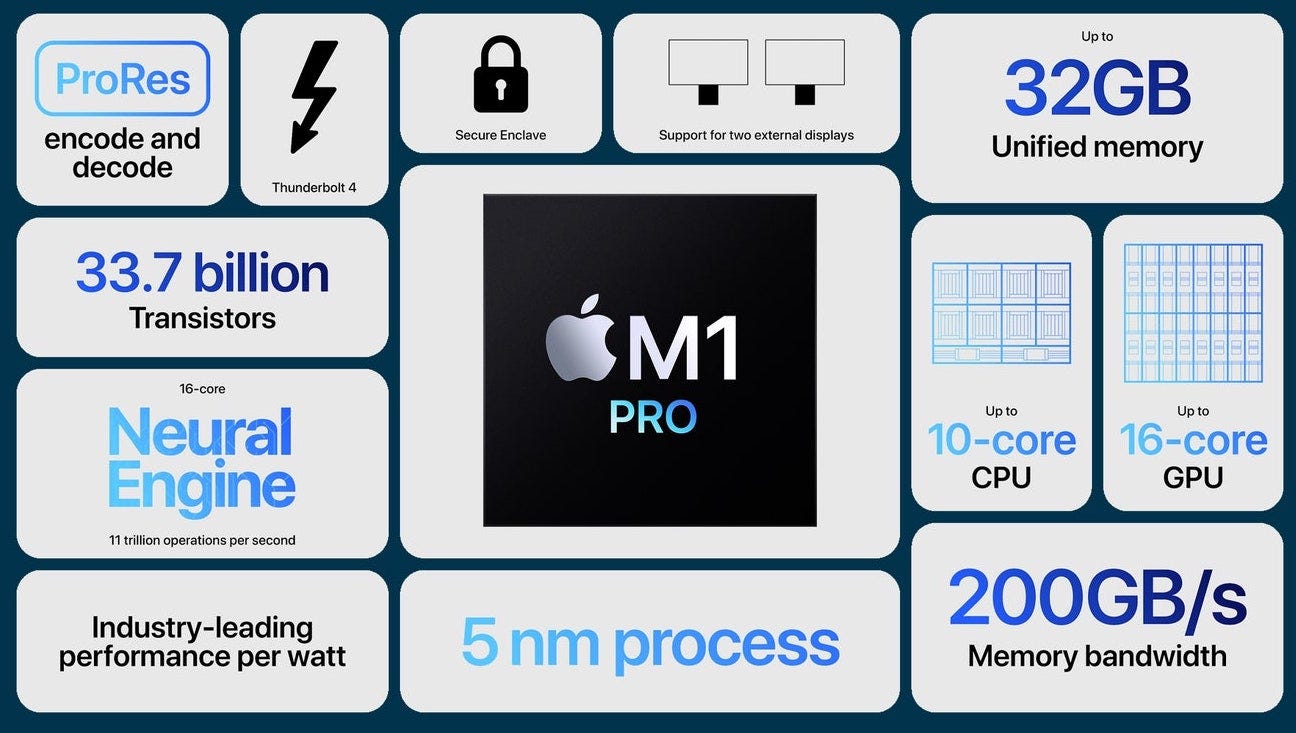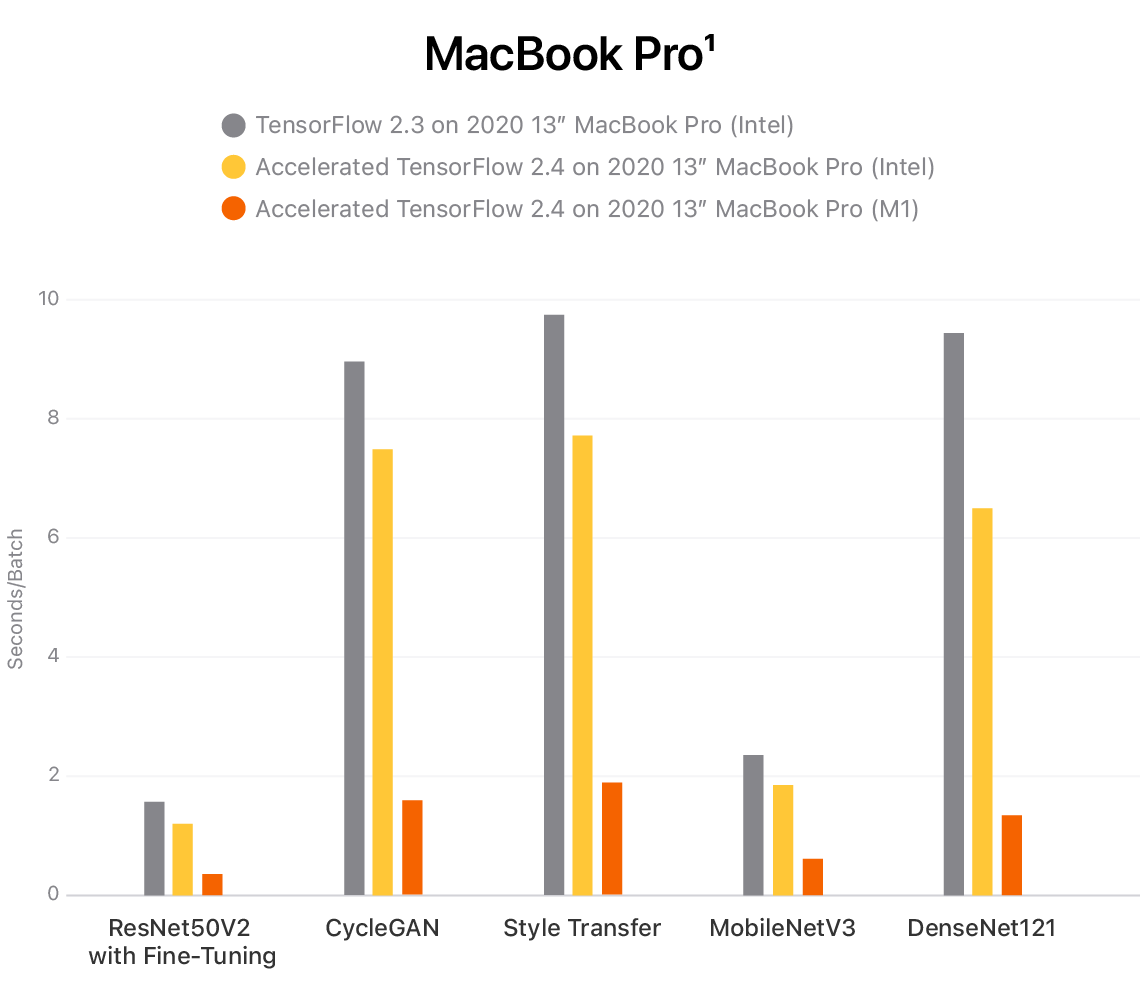
- #MACBOOK PRO GPU TENSORFLOW HOW TO#
- #MACBOOK PRO GPU TENSORFLOW INSTALL#
- #MACBOOK PRO GPU TENSORFLOW UPDATE#
Run the command below only if you are already using Conda.
#MACBOOK PRO GPU TENSORFLOW INSTALL#
I haven’t found a way to install the plugins using Conda yet. I am using a Conda environment by default, so I had to first deactivate it. Add to that a stunning Liquid Retina XDR display, the best camera and audio ever in a Mac notebook, and all the ports you need. With the blazing-fast M1 Pro chip the first Apple silicon designed for pros you get groundbreaking performance and amazing battery life. That’s the only version that Apple’s plugin supports for Intel-based Macs at the time of writing.įirst, let’s open Terminal app. The most powerful MacBook Pro ever is here. Python 3.8 - The only version that is supportedīefore you follow the official installation instructions, you need to have python 3.8. I do not have M1-based Mac, so I will focus on installing on Intel-based 16-inch Macbook Pro model with AMD GPU that I have.
#MACBOOK PRO GPU TENSORFLOW UPDATE#
But I don’t think my short post will cover every use case and every issue, so if you find something that I miss, please let me know, and I will try to update the post accordingly. In this post, I just want to share how I was able to install all the necessary softwares and test it on Jupyter notebook. You will also find many forum posts on various issues people have encountered. AMD will also launch the ROCm software platform, which the company said is optimized for accelerating deep learning frameworks such as Caffe, Torch 7 and Tensorflow The goal of this post is to list exactly which parts to buy to build a state-of-the-art 4-GPU deep learning rig at the cheapest possible cost The goal of this post is to list.
#MACBOOK PRO GPU TENSORFLOW HOW TO#
In the link above, you will find the official instructions from Apple on how to install python packages to utilize your GPUs for both M1 and Intel-based Macs.

Then, I saw there was a Github repo that experimentally supported Mac GPU with Tensorflow, and only recently realized that now Apple started to support it more officially.

When it worked, it worked great, but when it didn’t, it just didn’t. Once installed, use the following command to install TensorFlow on M1 Pro Macbook: python -m pip install tensorflow-macos Image 6 - Installing TensorFlow on M1 Pro Macbook (image by author) The installation will take a couple of minutes, as Miniforge has to pull a ton of fairly large packages. I have used PlaidML to get around this issue. Most, if not all, ML frameworks only supports Nvidia GPUs.

Even now I was able to connect a GPU to my MacBook Pro externally via Thunderbolt 2 and Akitio Thunder 2. I have been very happy with my Conda virtual environment setup to do machine learning experiments locally, but as you probably already know, you cannot utilize AMD GPUs on Mac with Tensorflow. But Im someone who was running tensorflow on OS X with gpu early on (look at the thread), and I switched to Linux specifically because I do a lot of net training with gpus, so take what I have to say fwiw. I cannot take responsibility for any harm done to your computer. Photo by is based on my experience and it may not work for your machine.


 0 kommentar(er)
0 kommentar(er)
